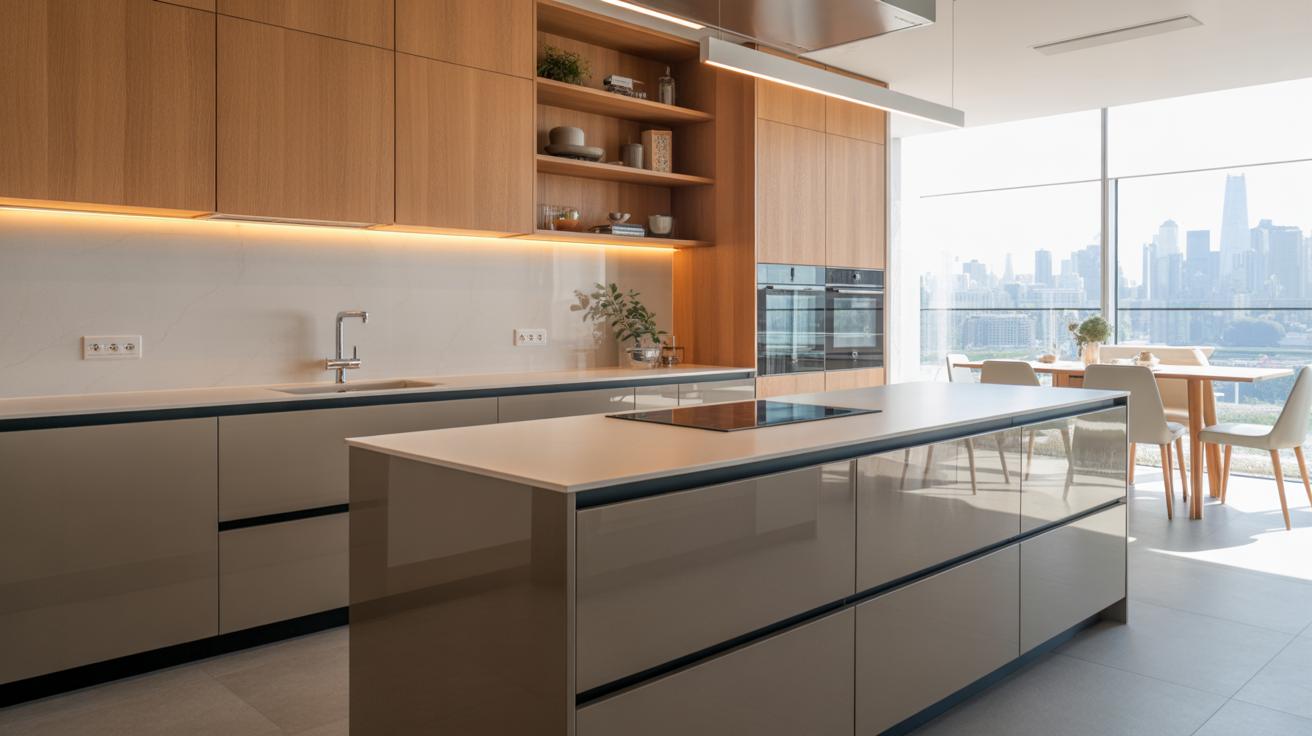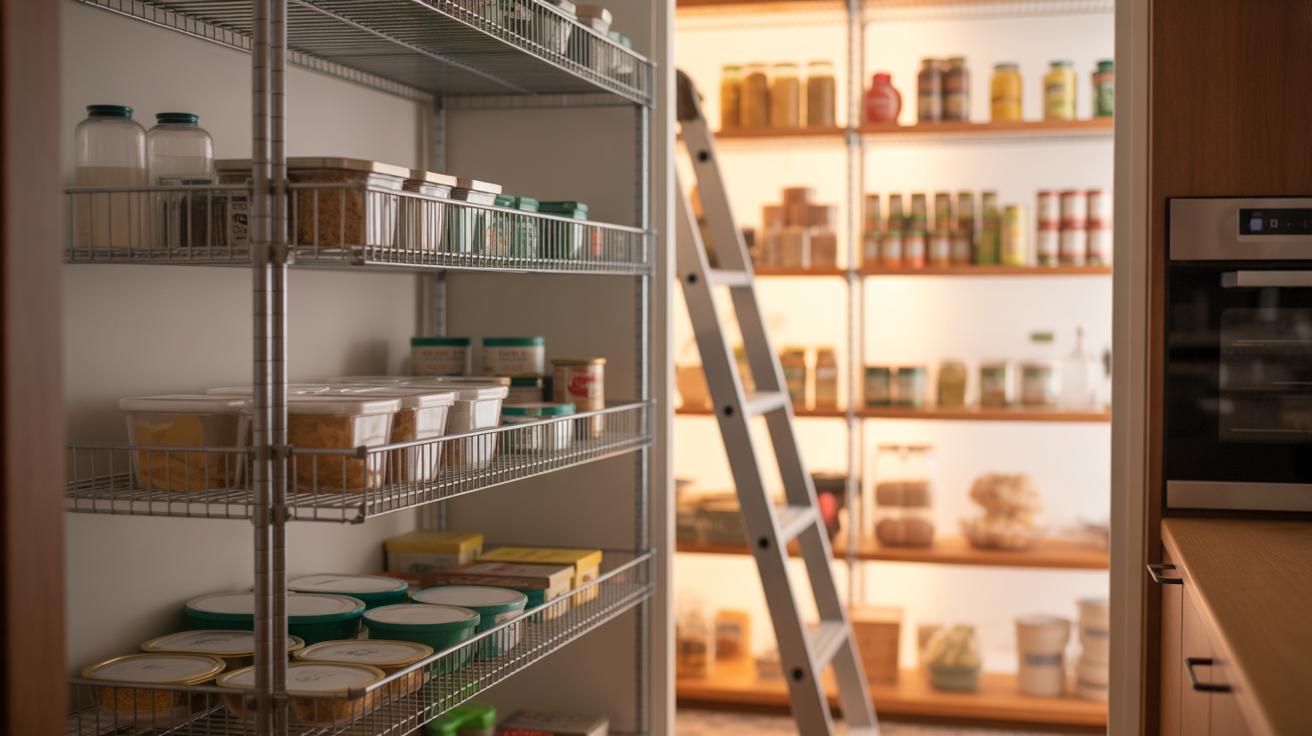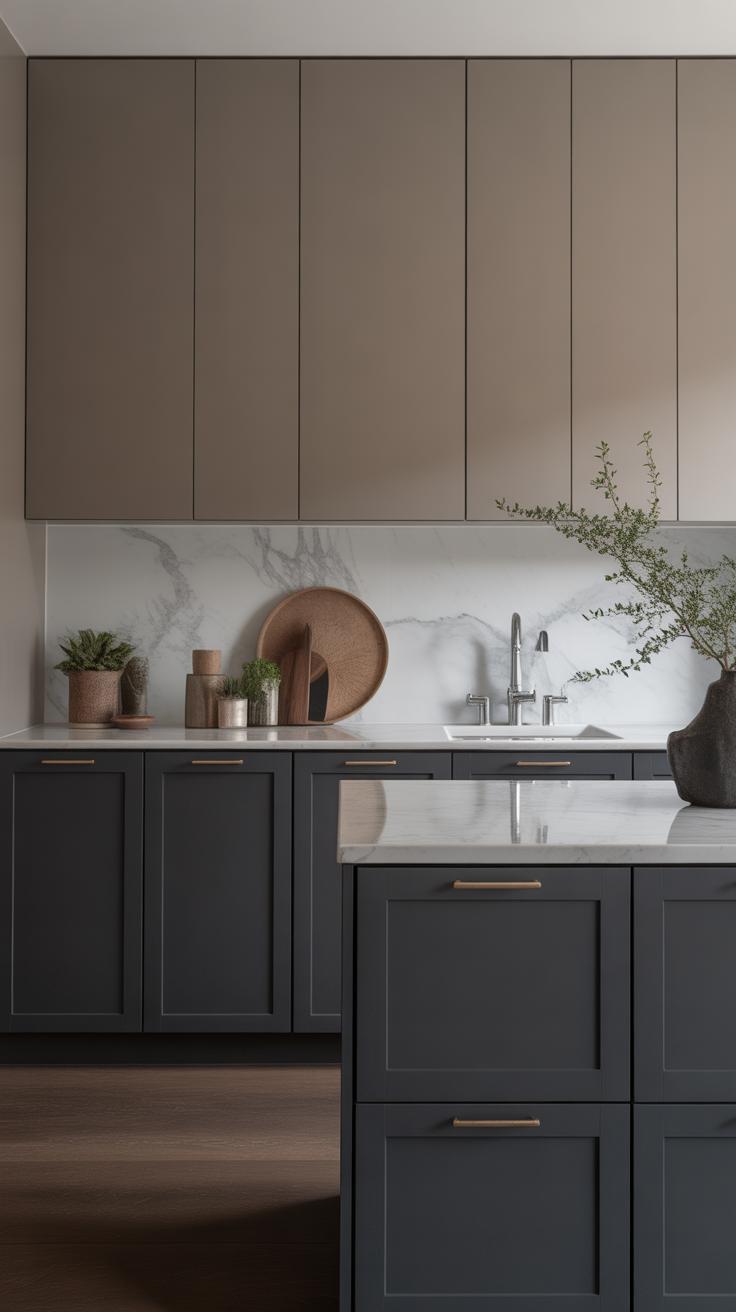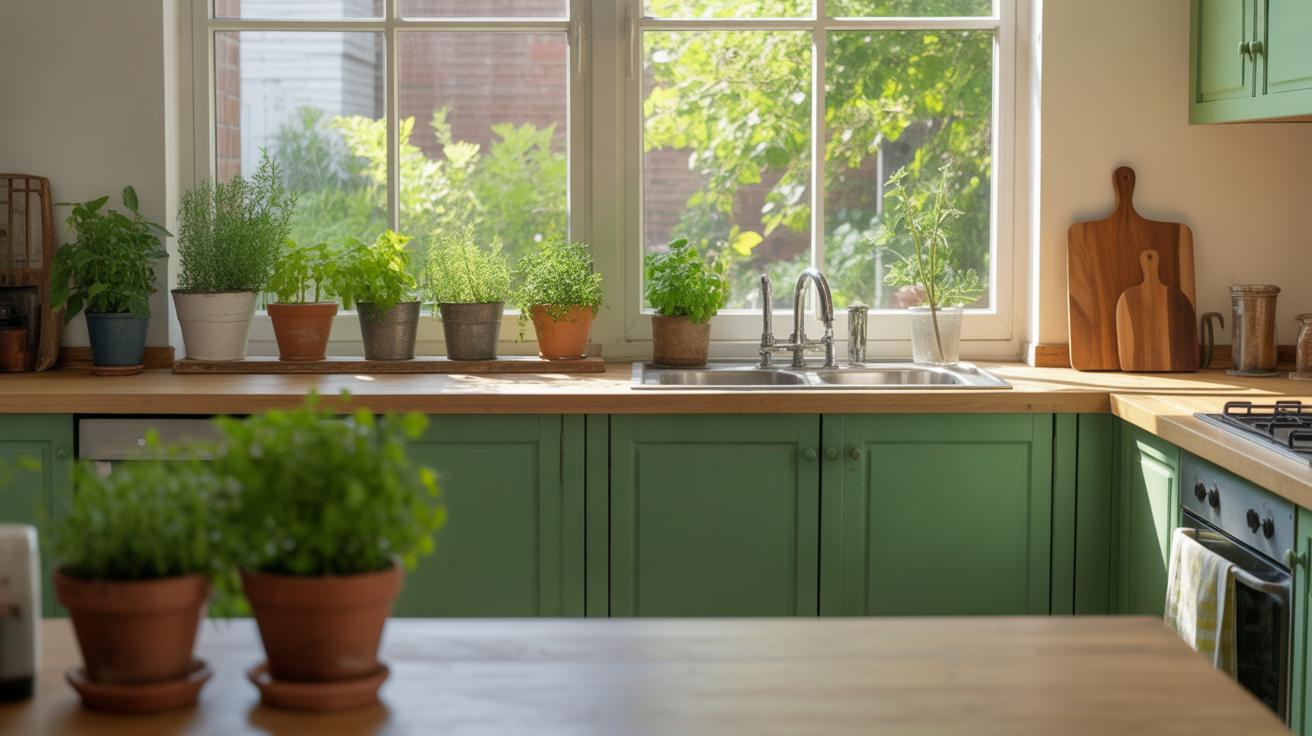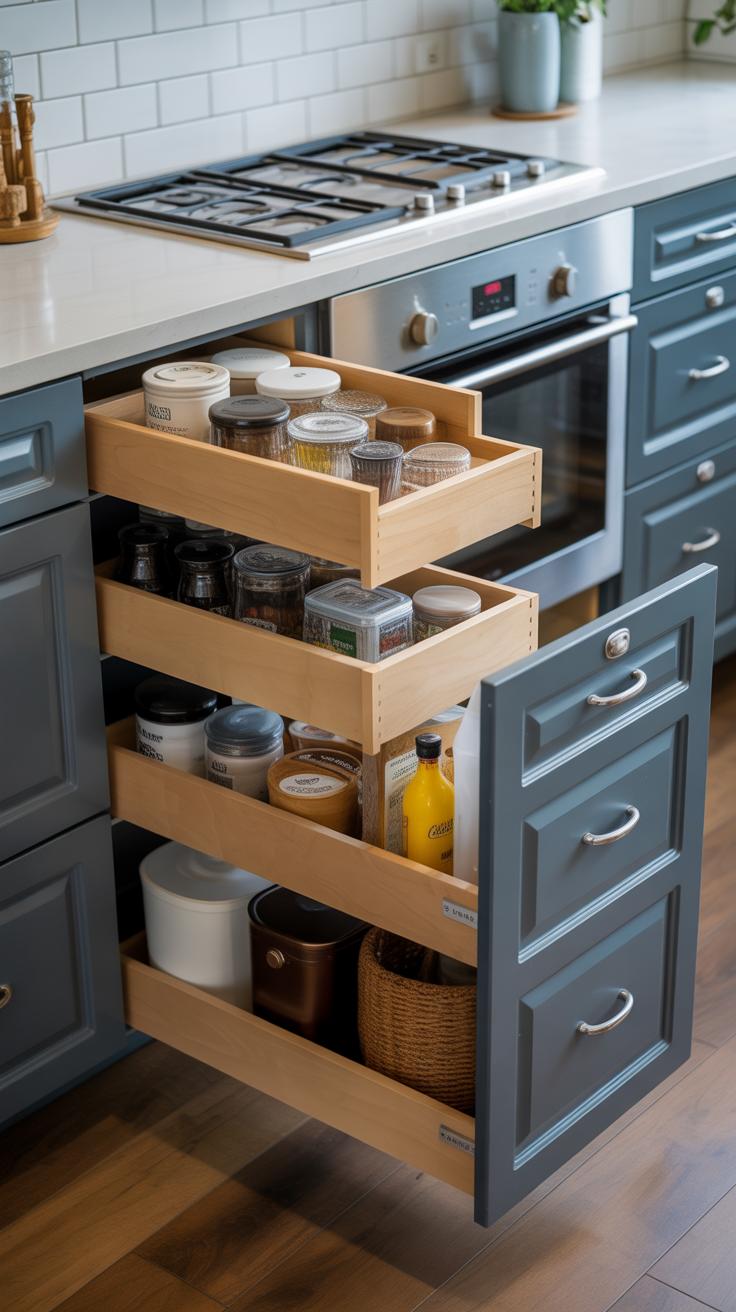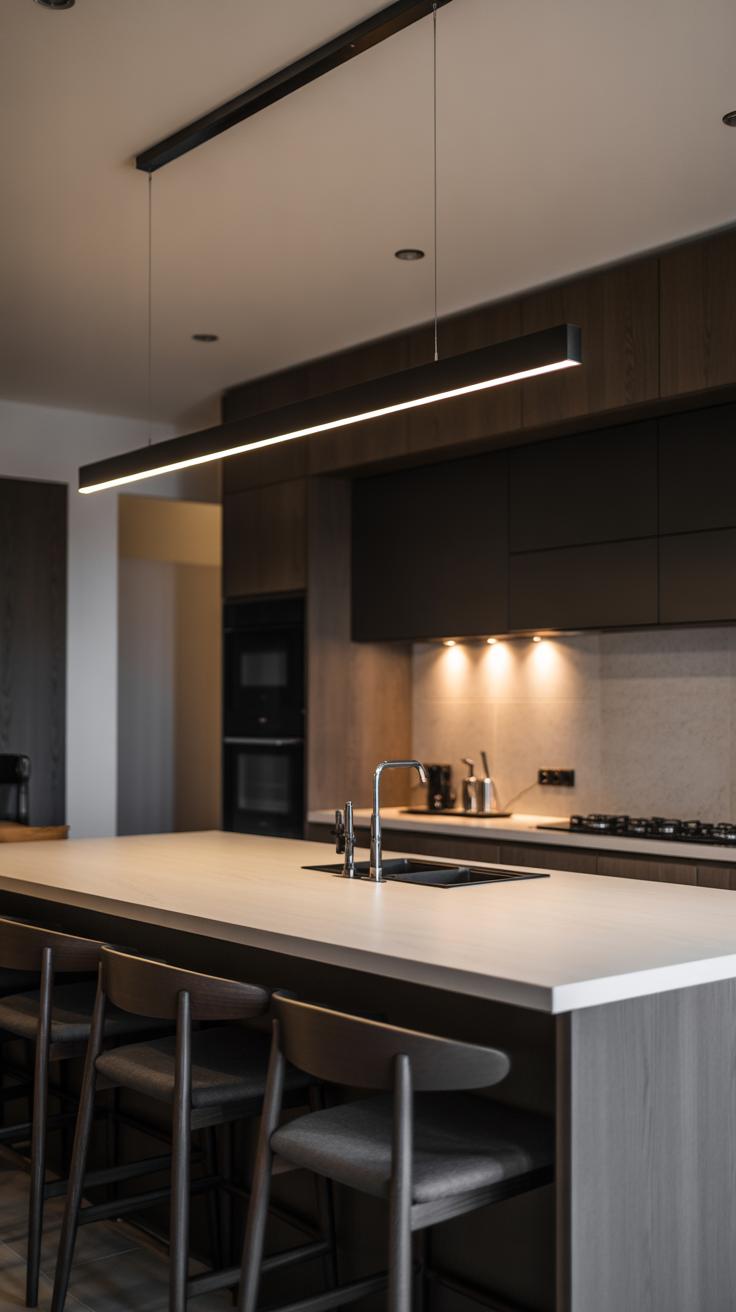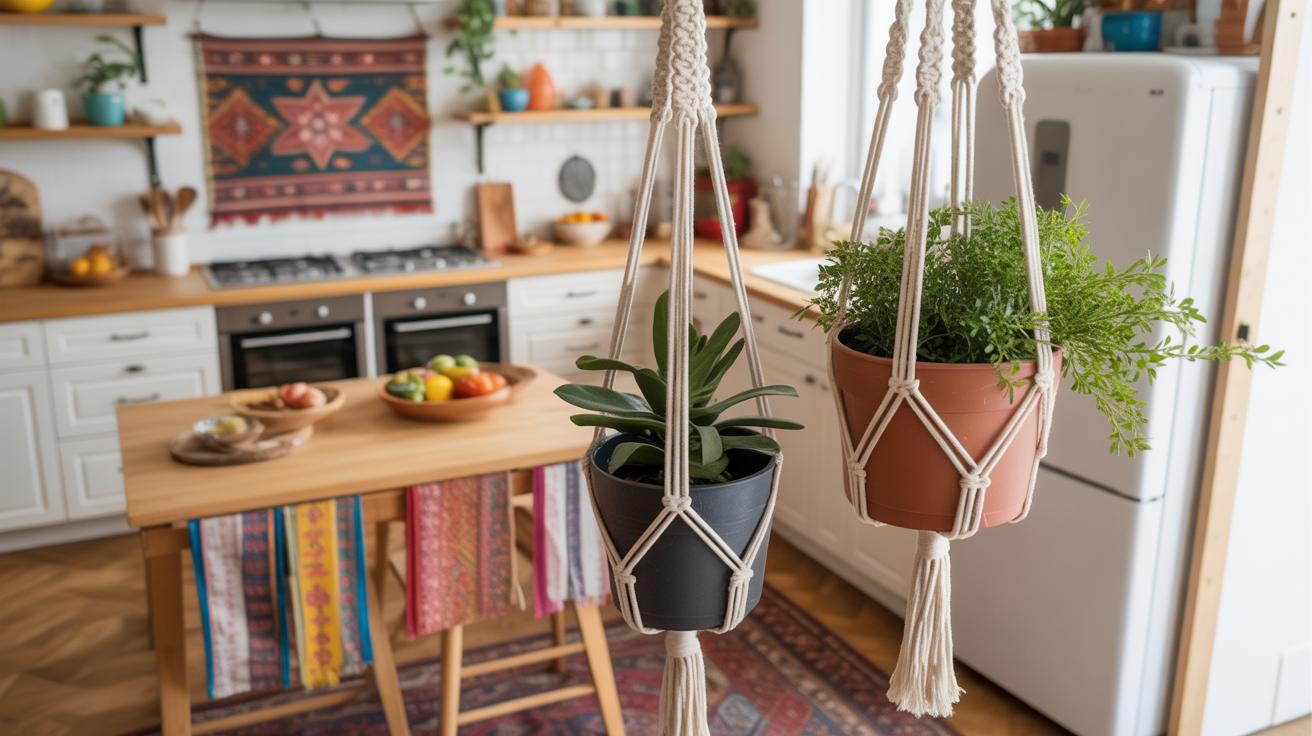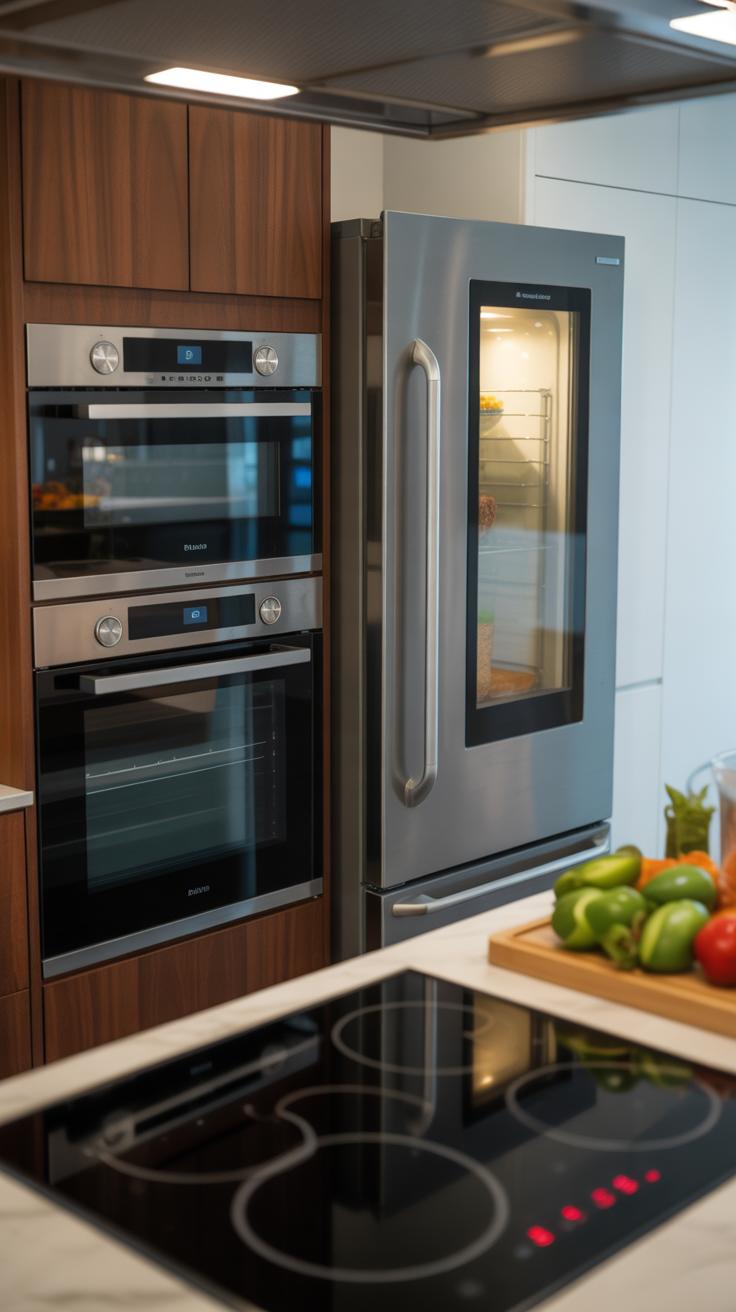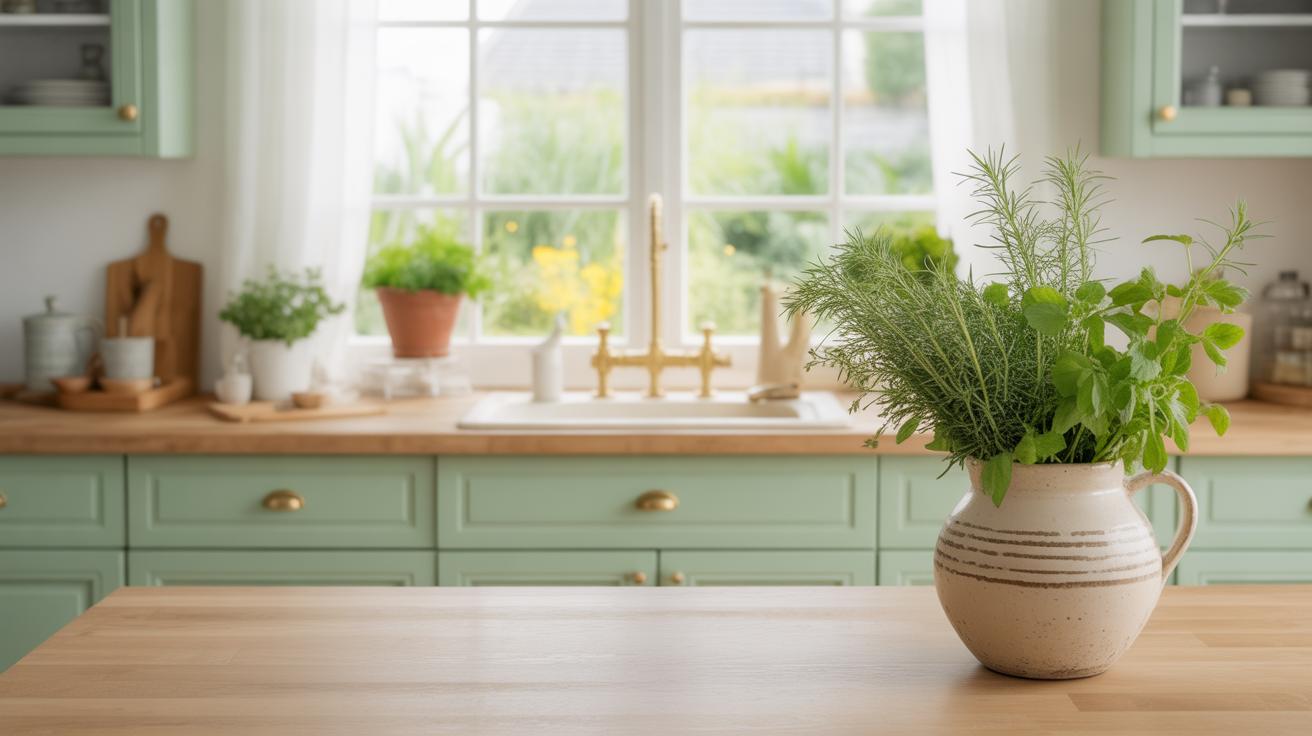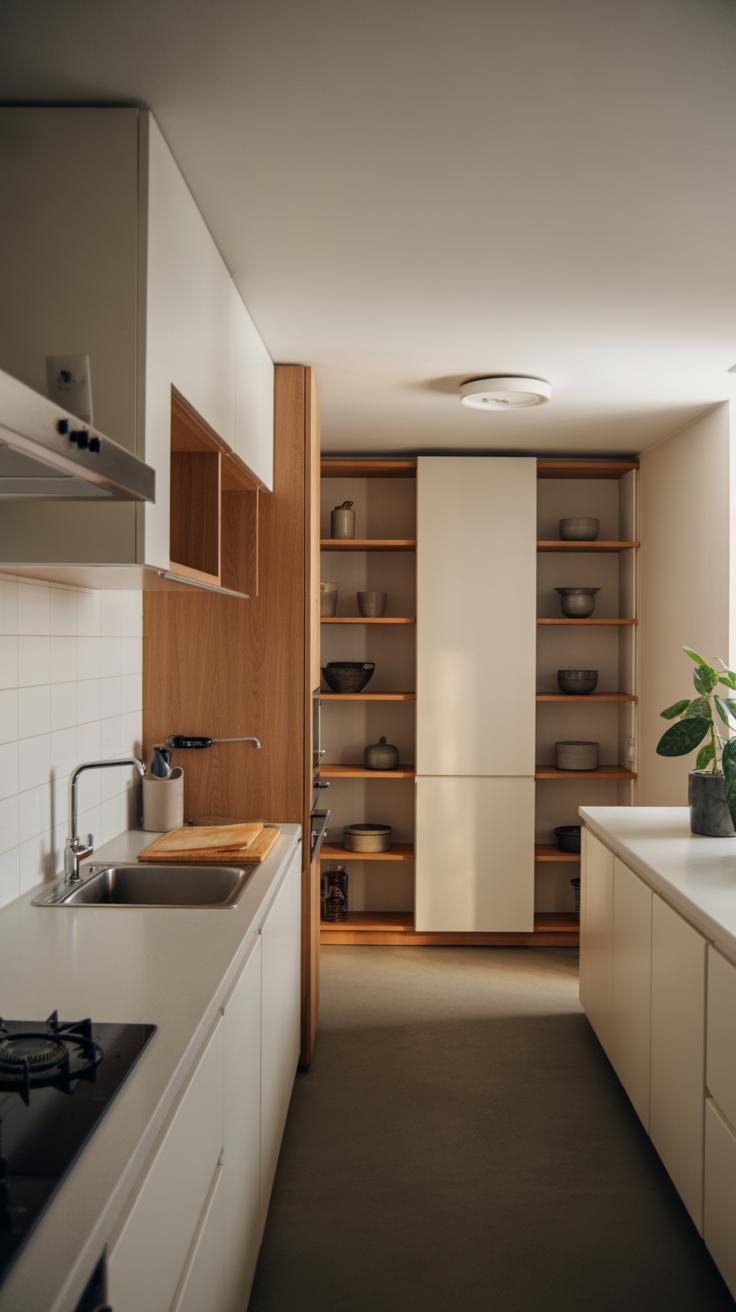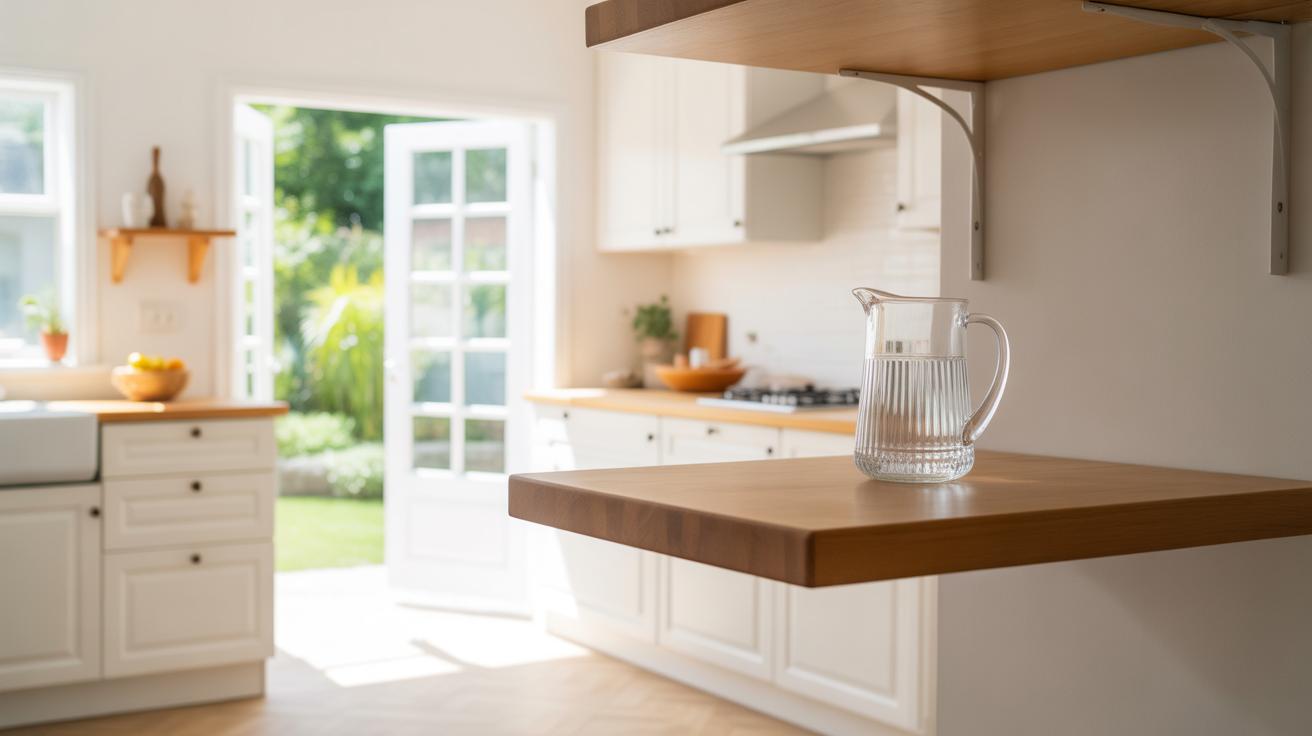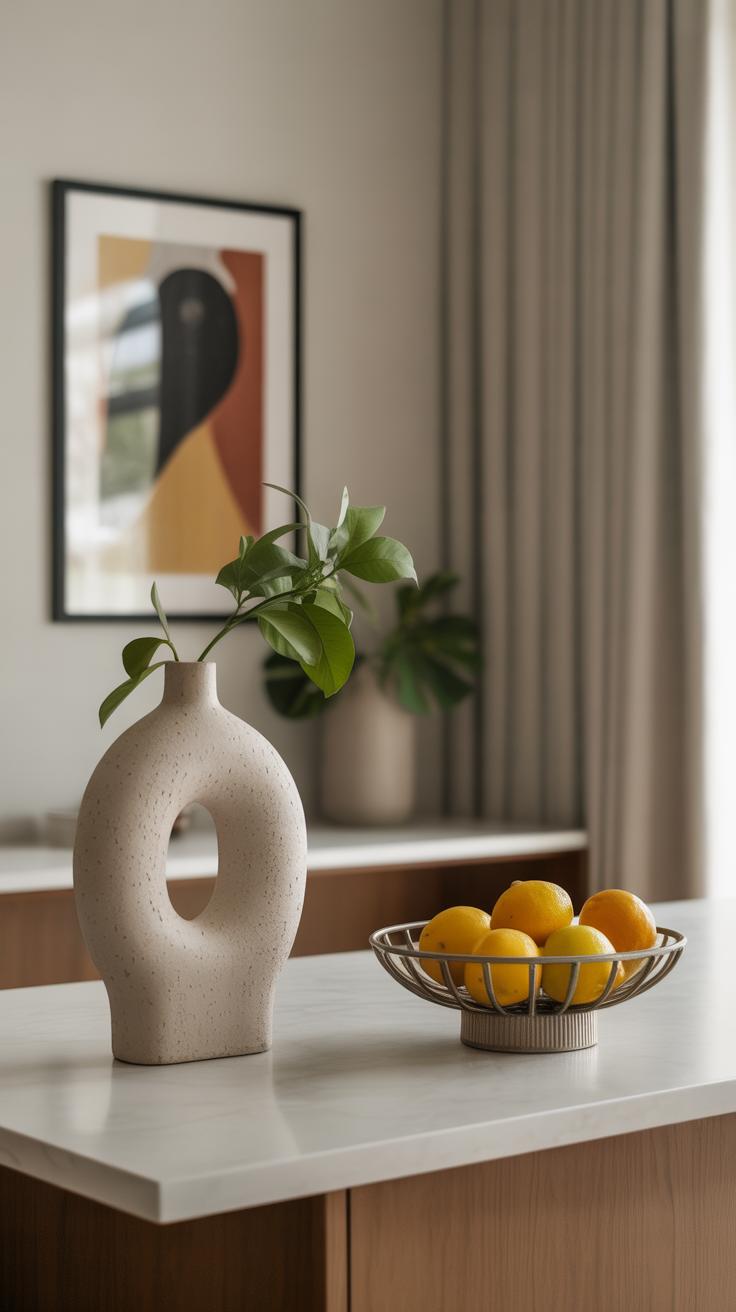Introduction
Modern kitchen interior design focuses on creating spaces that are sleek, functional, and pleasant to be in. It blends simplicity with style, making your kitchen both practical for cooking and comfortable for gatherings. Many new trends are shaping how kitchens look and work today. Knowing these can help you make choices that fit your needs and taste.
In this article, you will learn about important aspects of modern kitchen design. We’ll look at materials, colors, storage ideas, lighting, and appliances that can change your space. By understanding these trends, you can design a kitchen that feels fresh, inviting, and useful every day.
Understanding the Basics of Modern Kitchen Design
Modern kitchen design often gets boiled down to a few neat ideas, but it’s more nuanced than just clean lines and minimal clutter. At its core, it’s about simplicity that works—not the kind that feels stark or cold, but purposeful and functional. You’ll notice there’s a strong focus on how things are laid out to make daily tasks smoother. It emphasizes clear surfaces and subtle detailing, often avoiding fuss or ornamentation that serves no real purpose.
Functionality is the backbone here. Each element in the kitchen has a role, and every feature aims to enhance usability rather than just look good. Think of a kitchen where storage, workspaces, and appliances don’t fight for attention but blend into a cohesive whole. Clean lines don’t just mean straight edges but a sense of order that feels natural.
What Makes a Kitchen Modern
When you enter a modern kitchen, the first things you might notice are the spaciousness and the lack of visual noise. Open layouts encourage easy movement and social interaction, something many older kitchens lack. Cabinets often have flat fronts without handles or with hidden hardware, pushing that streamlined look further.
Integrated appliances play a key part. Instead of bulky gadgets, you get built-in ovens, refrigerators disguised behind cabinet panels, and sleek cooktops that almost disappear into the counters. Lighting tends to be strategic but understated, supporting the space without making a statement all by itself.
Aside from aesthetics, materials and finishes lean toward matte or soft gloss, avoiding excessive shine that can feel dated. Overall, the vibe is quiet but intentional—there’s not much that feels accidental or overly decorative.
Why Choose Modern Design for Your Kitchen
Modern kitchens aren’t just about looking current. They bring practical benefits you might not consider upfront. Surfaces like quartz or solid-surface countertops wipe clean effortlessly, which can be a bit of a relief if you cook often or have kids trickling in with messy hands.
The streamlined cabinet designs usually mean better organization possibilities. Drawers can be outfitted with smart dividers, and clutter finds less place to hide, which ironically makes tidying feel less like a chore. Plus, that fresh, updated appearance can make the kitchen feel more inviting—even if it’s a small space.
Of course, some might find modern design too restrained or impersonal, but when done right, it balances comfort with sophistication. You might not have all the decorative quirks of a traditional kitchen, but you gain clarity and peace of mind when you move through the space.
Selecting Colors and Materials for a Contemporary Look
Colors That Define Modern Kitchens
Neutral tones usually dominate modern kitchens, offering a clean and calm backdrop. Whites, greys, and soft beiges make spaces feel open and bright, which is often what you aim for. But sticking only to neutrals can sometimes feel flat—so many designers now add a bold accent color to break the monotony. Deep navy, forest green, or even a muted mustard can create just enough contrast without overwhelming the space.
Natural hues also play a subtle yet important role. Think of earthy greens, warm taupes, or muted blues inspired by nature. These colors bring warmth and softness while keeping that modern minimal vibe intact. Sometimes, balancing these palettes feels like a bit of a guessing game, and I’ve noticed that mixing them depends a lot on the kitchen’s lighting and surroundings. You might want to test paint samples more than once before settling.
Materials That Enhance Modern Interiors
Modern kitchens often favor materials that look sleek but also hold up well over time. Stainless steel is a classic choice. It’s reflective, which adds brightness, and it resists smudges—although fingerprints do show more than you’d think. Quartz countertops have gained popularity, thanks to their durability and low maintenance, plus the wide range of patterns lets you lean toward either uniformity or subtle textures.
Glass elements, like cabinet doors or backsplashes, bring in depth and a certain crispness. They reflect light interestingly, although they need regular cleaning to avoid streaks. Wood introduces an unexpected warmth to what might otherwise feel sterile. Opting for smooth, matte finishes on cabinetry or open shelving balances softness with modern simplicity. While mixing materials, you’ll find subtle contrasts keep things fresh. Maybe that’s why combining steel with wood feels both polished and approachable.
Smart Storage Solutions to Keep Your Kitchen ClutterFree
Modern kitchen design places a big emphasis on keeping things clean and clutter-free, and smart storage plays a huge role in that. Built-in cabinets that stretch from floor to ceiling often help you hide everything out of sight, creating that smooth, uninterrupted look everyone likes. Sometimes, hidden storage options—like toe-kick drawers or lift-up pantry doors—are surprises that make small kitchens feel surprisingly spacious.
Organizing Cabinets and Drawers
When it comes to organizing cabinets and drawers, certain designs stand out. Deep drawers for pots and pans eliminate the classic awkward stacking of cookware, while pull-out spice racks keep tiny bottles accessible but out of sight. Flat-front cabinets without handles continue the sleek aesthetic while also making cleaning easier. You might think open shelving adds lightness, but it can actually work against tidiness unless carefully curated. Cabinets designed to hold trash bins or recycling bins tucked inside are practical, though not always the most glamorous feature. Yet, they keep counters free of clutter, which counts for something.
Using Modern Storage Accessories
Several gadgets make organizing your kitchen simpler than ever. Pull-out shelves bring everything to eye level—you don’t have to bend or dig around. Divider trays help separate utensils or tools so you’re not scrambling for that one measuring spoon. Some kitchens even use magnetic racks inside cabinet doors to hold knives or metal lids. These tweaks might seem small but affect daily routines more than you expect. You might wonder if a fancy organizer is really necessary, but once you try, it’s hard to imagine going back.
Incorporating Functional and Stylish Lighting
Lighting plays a surprisingly big role in shaping modern kitchen spaces. It’s not just about seeing what you’re chopping; it’s about setting a mood and creating an environment that feels both inviting and practical. When planning kitchen lighting, layering different types of light is usually the key. This means combining bright, focused light for work areas with softer, more diffuse light to relax or highlight design features.
For example, you might place strong, direct light above your countertops to make food prep easier, but then add dimmable overhead lighting or under-cabinet strips that soften the room during evenings. That way, the kitchen shifts with your needs—from a busy, well-lit workspace to a warm, calm spot for unwinding.
Types of Lighting to Use
There are three main kinds of lighting to juggle: task, ambient, and accent.
- Task lighting targets work zones such as countertops, sinks, and stoves. Think bright, clear, focused illumination that prevents shadows and lets you see details. LED strips under cabinets or adjustable recessed lights work well here.
- Ambient lighting provides overall illumination. Ceiling fixtures, flush mounts, or pendant lamps that wash the room in light create an even brightness without harsh spots.
- Accent lighting adds personality and highlights features like open shelves or design focal points. Small spotlights or subtle LED strips tucked behind molding can lift the atmosphere.
Mixing these layers can help you avoid a flat, one-dimensional look, which some kitchens fall into when stuck with just a single overhead light.
Choosing Modern Light Fixtures
Picking fixtures for a modern kitchen feels like balancing style and function. Sleek, simple shapes usually fit best—think linear LEDs, slim pendants, or geometric recessed lights. Materials like brushed metal, matte black finishes, or glass often blend well with contemporary themes.
But don’t just chase trends. You want pieces that provide enough light without overwhelming the space or feeling visually heavy. For example, a group of small pendant lights over an island can serve as both focal points and task lighting without cluttering the ceiling visually.
Sometimes, it takes a bit of trial and error to get this right. I’ve found that testing brightness and how shadows fall before final installation saves frustration later. After all, a cool fixture means little if the kitchen still feels dark or awkwardly lit.
Modern Kitchen Appliances That Improve Daily Life
Smart Appliances for Convenience
Smart appliances have become an essential part of contemporary kitchens, changing how you interact with everyday tasks. Take connected ovens, for example—they allow you to preheat remotely or follow recipes through built-in touchscreens, making cooking less of a hassle. Refrigerators now do more than keep food fresh; some monitor expiration dates or let you peek inside via your phone when you’re at the store. Dishwashers with sensors adjust water usage based on load size, which can save time and resources without compromising results.
These features, while impressive, don’t always come cheap or trouble-free. Sometimes, it’s tricky to get all the devices talking to each other, and updates may be inconsistent. Still, the convenience of adjusting settings from your phone or receiving alerts often outweighs the minor learning curve. It might not be for everyone, but those who enjoy blending technology with cooking tend to appreciate these advancements.
Choosing Appliances That Match Your Style
Selecting appliances for a modern kitchen isn’t just about picking what works best. The look matters a lot, especially if you want your space to feel sleek and uncluttered. Built-in units that blend into cabinetry, or models with minimalist finishes like matte black or stainless steel, can create a coherent style. Sometimes, integrated handles make appliances almost disappear visually, which some people prefer for maintaining a clean look.
You might hesitate to go fully integrated, though, because visible controls can be easier to use. It depends on how much priority you give to function over form—or maybe a bit of both. Before buying, try to imagine how appliances will fit with your counters, lighting, and overall color palette. Often, it helps to balance standout pieces, like a bold fridge design, with subtler hood vents or microwaves.
At the end of the day, the best appliance is one you enjoy using and looking at daily, not just what’s trending.
Designing a Kitchen Layout for Smooth Workflow
Planning your kitchen space with movement in mind is key. When you’re cooking, reaching for utensils, prepping veggies, and cleaning up should feel natural—not like an obstacle course. Think about the path between the sink, stove, and refrigerator. This trio, often called the work triangle, remains a useful guide in modern layouts, but don’t treat it as a strict rule. Sometimes, your space or habits call for a tweak.
Popular layouts like L-shape, U-shape, and island designs each offer different flow possibilities:
- L-shape: Great for open spaces and small families. It keeps the work area compact but allows for easy interaction with adjacent rooms.
- U-shape: Offers lots of counter space and storage. It can create a cozy workspace but sometimes feels boxed in if the room is small.
- Island: Islands break up the workspace without closing it off. You get extra prep surface, casual seating, or even a secondary sink or stove. But they demand space and thoughtful placement.
To make things flow well, try to separate zones. Prep, cook, and clean areas shouldn’t overlap too much. Keep pathways clear to avoid bumping into anyone—especially if multiple people cook together. I’ve found that dedicating specific drawers or shelves to each zone helps, too. Yes, it might feel like a bit of extra work upfront, but your daily routine becomes smoother, and you might even enjoy spending time in your kitchen more.
Adding Personal Touches While Keeping It Modern
Injecting your personality into a modern kitchen doesn’t mean covering every surface with stuff. It’s more about subtle nods to what you like without interrupting the clean, open feel. Sometimes, less really is more. You could try swapping out a standard kitchen towel for one with a unique pattern or color that catches your eye but stays tidy.
When selecting artwork or decorations, pick pieces that offer sleek lines and minimal detail. Think about small canvases or prints with abstract shapes or muted colors. These can soften the space without overwhelming it. For example, a black and white photo framed simply can add character without clutter. A few well-chosen ceramic bowls or a sculptural vase can work as focal points on open shelves or counters, but watch the numbers—too many, and you lose that sense of calm.
Plants introduce something refreshing and slightly unpredictable. A small herb garden on the windowsill or a single potted plant can bring life to the room. Natural materials like wood utensils or stone bowls add texture and warmth that cold surfaces sometimes lack. These natural touches don’t just look good—they invite a little serenity. Just keep an eye on maintenance; no one wants a wilting plant spoiling the vibe.
Maintaining Your Modern Kitchen Over Time
Keeping a modern kitchen looking fresh doesn’t have to be a constant chore. Actually, a few simple routines can make a surprising difference. For example, wiping down surfaces daily with a gentle cleaner prevents buildup that’s harder to tackle later. Stainless steel appliances benefit from a soft cloth and a little bit of olive oil to keep fingerprints at bay. And yes, it might sound obvious, but cleaning spills right away—especially on countertops—can save you from permanent stains or damage.
Organization plays a role too. Setting aside a few minutes each week to put away items misplaced during cooking can stop clutter from creeping in. I find that dedicating one drawer for daily essentials helps keep things in order without complicating your setup.
Regular Cleaning and Care
Some routines to keep your kitchen surfaces and appliances looking nearly new:
- Wipe counters with a pH-neutral cleaner daily or after heavy use.
- Use microfiber cloths for glass and stainless steel to avoid scratches.
- Clean or replace filters in range hoods monthly.
- Deep clean the oven and fridge every couple of months.
- Use cutting boards to prevent knife marks on counters.
Simple, right? But sticking to these can really pay off. It’s easy to skip, but you’ll notice how much smoother your kitchen feels when it’s tidy and well cared for.
Updating Elements Without Major Renovations
Now, if you’re wondering how to keep your kitchen current without tearing everything down — consider subtle tweaks. Changing cabinet hardware gives the space a surprisingly fresh look. Swapping out old pulls for sleek metal ones can shift the style immediately.
Repainting is another worthy option. Even just the cabinet doors or an accent wall in a clean tone can renew the feel. Sometimes, simple things like replacing lighting fixtures or adding a new backsplash tile sample to a small area can hint at an update without major expense or hassle. You might hesitate, but small changes over time could keep your kitchen feeling stylish, while you avoid costly renovations for the long haul.
Conclusions
Your kitchen can be a modern, efficient, and beautiful area by applying the key ideas of contemporary design. Choosing clean lines, smart storage, and balanced colors will give your kitchen a modern look. Adding the right lighting and appliances enhances both style and function.
Think about how you use your kitchen and what features matter most to you. Use the tips shared here to guide your design decisions. A well-planned modern kitchen not only looks great but makes cooking and daily tasks easier. Take the steps today to build a kitchen space you will enjoy for years to come.

